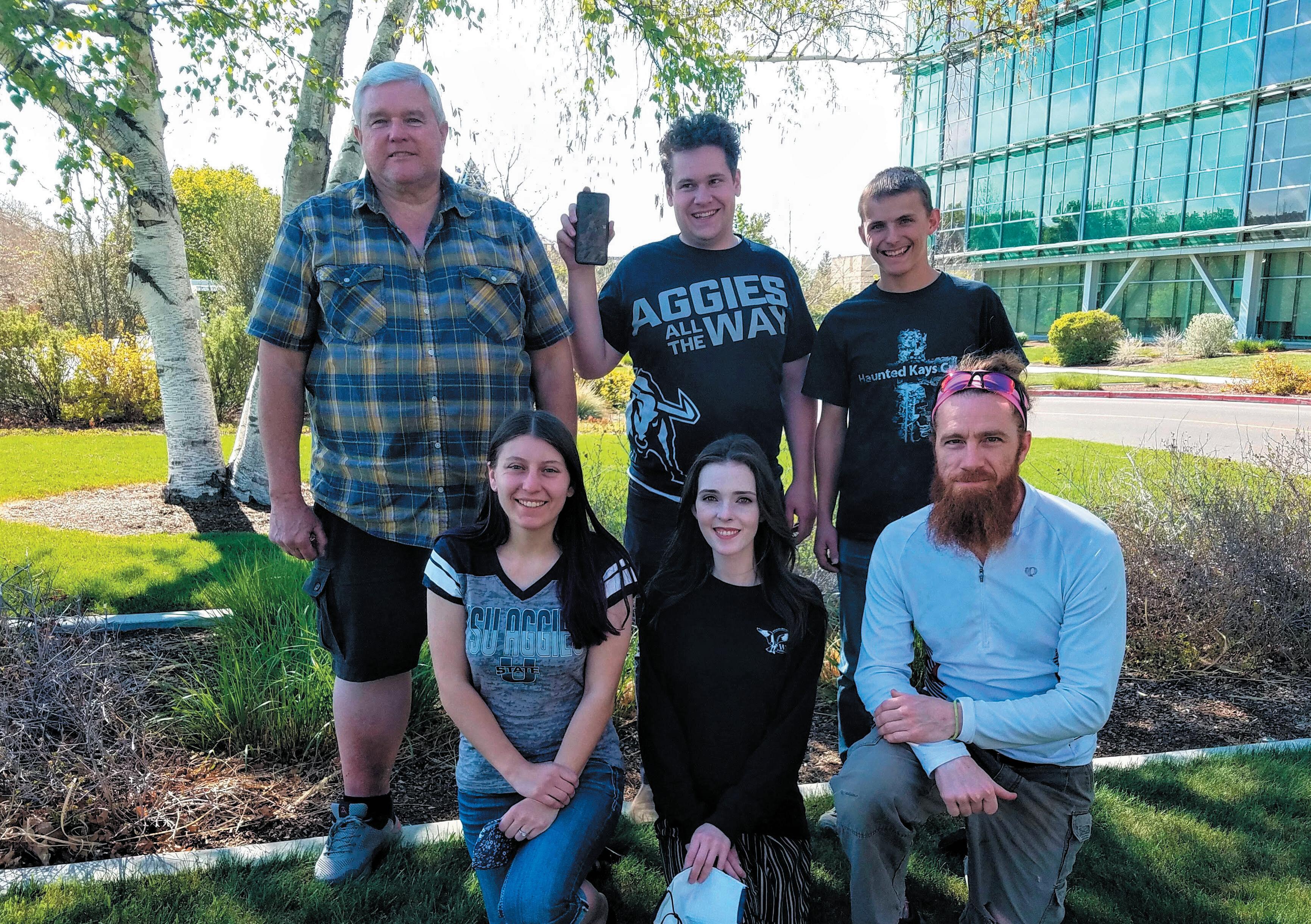
14 minute read
2021 Faculty Retirements
USU’s soils judging team achieved the top overall group score in the 2021 National Soils Judging Contest. Pictured here (left to right, back row) are the team’s coach, John Lawley, an attempt to include a cell phone photo of missing team member Connor Campbell, Kahlin Wacker, and Jacob Andrews, (left to right, front row) Katie Goodsell, Sabrina Greenwood, and Logan Banner.
Charles Carpenter
Elias Perez
Roger Coulombe Linda Davis Randy Mabbutt
Don McMahon
Ron Munger
Edward Reeve
Gary Stewardson
Julie Wheeler Allen Young
Lon Youngberg


Landscape architecture and environmental planning student Kyle Young combined an assignment in the advanced geospatial and visualization of the environment course with his love of roller coasters and ultimately designed a roller coaster in a virtual world where tracks swirl around Old Main. The course introduces topics surrounding geographic information and geospatial technologies and explores their applications in the context of landscape architecture and environmental planning, though few projects result in a stomach-clenching virtual reality ride. See video at TinyURL.com/USUQuadCoasters
Tart Cherry Research
Tart cherry sales are a significant part of Utah’s agricultural economy, yielding between $7 million and $21 million annually. A multidisciplinary team of researchers at Utah State University and Michigan State University have been awarded $1.97 million over four years from the United States Department of Agriculture to study more efficient ways of managing this major crop, with the goal of helping farmers tackle obstacles such as drought, pests, low yield and soil health. Professor Brent Black in the Department of Plants, Soils, and Climate and Extension fruit specialist, has over 30 years of experience researching crop management and serves as the project lead.
Maple Syrup Research
Plant scientist Youping Sun was awarded $500,000 in grant funding from the USDA for a project dedicated to developing a maple syrup industry for the Interior West through research and Extension efforts. With several native maple species, Sun believes there is an opportunity to bring the maple industry to life in Utah. He has also received substantial grant funding to study and develop more drought-tolerant landscape plants and was honored with a 2021 Distinguished Achievement Award for nursery crops research from the American Society of Horticultural Science.
Grazing Greener
With a $6.8 million grant from the USDA National Institute of Food and Agriculture, a diverse team of collaborators will work over the next five years toward resolving the tangled issue of how to produce beef as an environmentally, economically, and socially sustainable food. The research team includes plant science Professor Jennifer McAdam (center), Eric Thacker (right) associate professor and Extension rangelands specialist, and is led by Professor Juan Villalba (left), in USU’s Department of Wildland Resources. The strategy they think will provide answers is ‘smart foodscapes’— islands of nutritionally dense and botanically diverse plants strategically placed on rangelands to improve cattle nutrition and reduce environmental impacts while increasing biodiversity and extending grazing seasons.

What’s New in Aggie Chocolate?
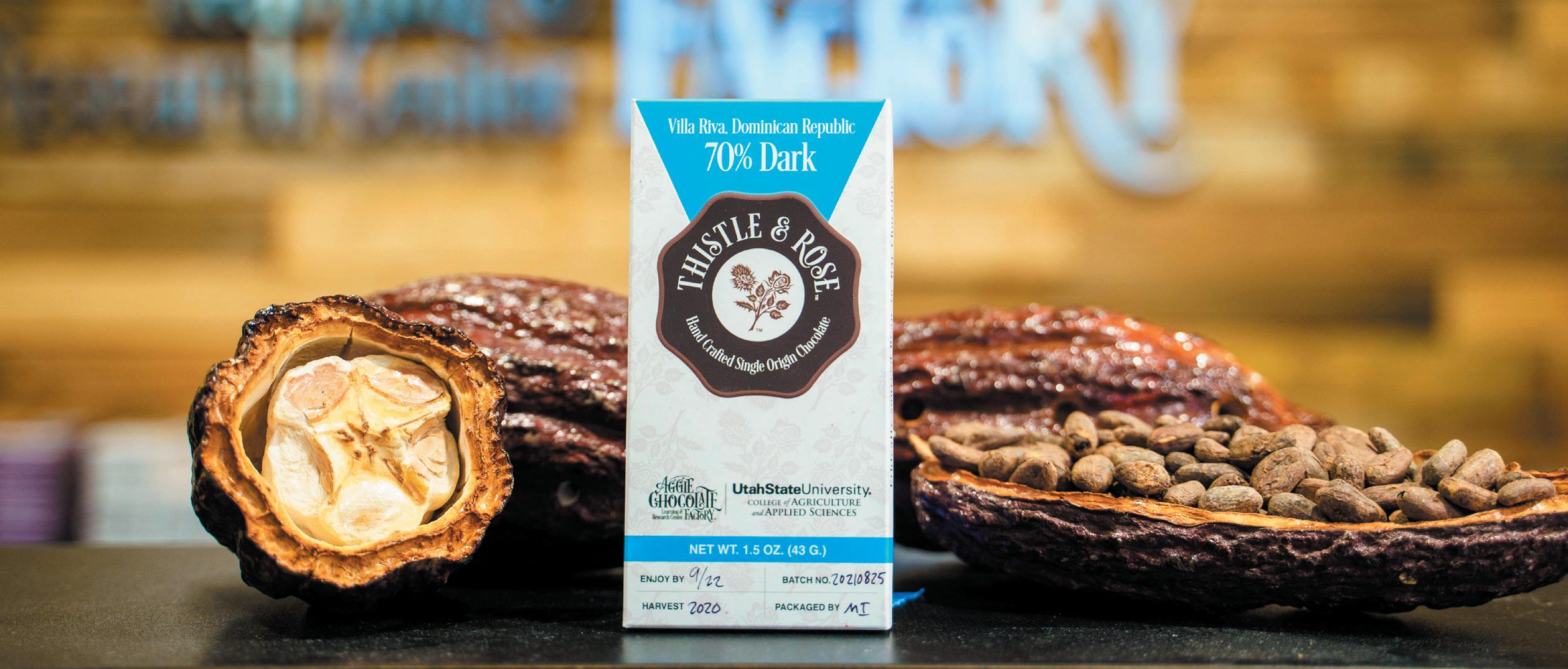
Utah State University’s Aggie Chocolate Factory is proud to announce a new collaboration with Twenty Degrees, a sustainable cocoa bean supplier that sources beans from around the world. The Aggie Chocolate Factory is now producing chocolate from Villa Riva Cacao grown in the Dominican Republic. The company’s name is a reference to the cacao belt, the area between 20 degrees north and south of the equator where the world’s supply of cacao is grown. The Twenty Degrees website describes Villa Riva beans as bright and fruity, “reminiscent of berries [and] tropical fruit.”
Cranberry Salsa Winners
Food science students from across the U.S. and Canada competed with new sauces, condiments, and dips using Ocean Spray cranberries, and USU students Melissa Marsh, Annalisa Jones, and Weston Christensen won the $5,000 first-place prize. The goal was to promote home cooking and help consumers incorporate cranberries into everyday foods, not just holiday meals. USU’s winning entries were two cranberry hot sauces, one with flavors of lime and jalapeno in addition to yellow cranberries and a red cranberry-based sauce with smoky flavor notes and some heat.
Father’s Diet and Infant Health
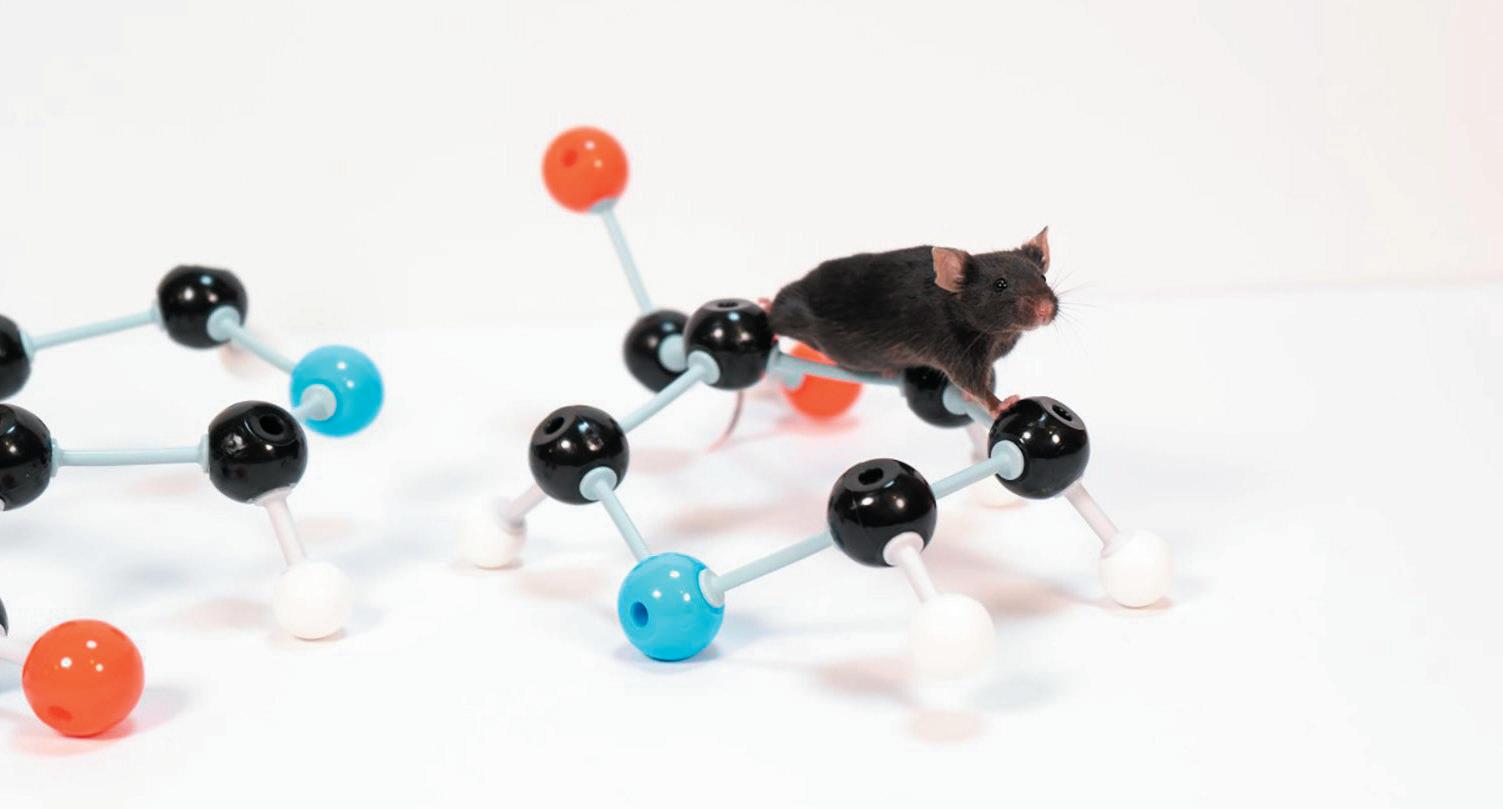
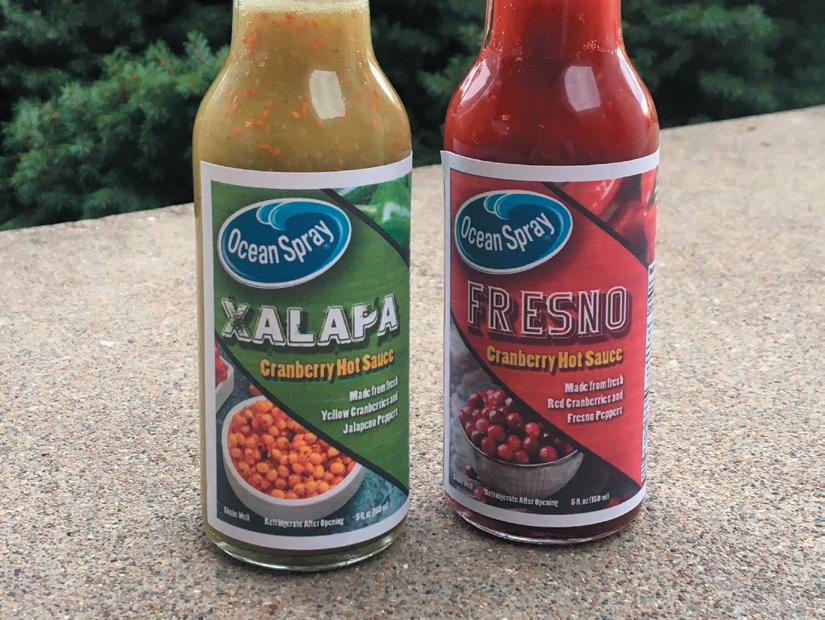
A National Institutes of Health grant of more than $1.5 million will support USU researchers’ study of the role of a father’s nutrition in infant health. A research team consisting of faculty members Mirella Meyer-Ficca, Ralph Meyer, and Rakesh Kaundal as well as Clara Cho at the University of Guelph, and Kevin Welch from the USDA Poisonous Plant Research Laboratory on the USU campus received the grant to study how male mouse diets affect the health of their offspring. Principle Investigator Meyer-Ficca explains that the big picture of this study is to answer the question, “How can anything we are exposed to in our environment change offspring health through the father’s germline?” The team will focus first on niacin in a mouse model that closely resembles human vitamin metabolism.

Ag Communicators Win National Award
USU’s chapter of the Agricultural Communicators of Tomorrow was named Chapter of the Year for community service and member recruitment. In 2020, students partnered with the Nora Eccles Harrison Museum of Art to create an audio tour that focused on art and Utah agricultural history to accompany an exhibition celebrating American agriculture. Individual students also received awards during the national Ag Media Summit, including senior Kailey Foster, who was awarded first place for a brochure she created for Sheep Genetics USA.

Sheep Day 2021
Students seeking a new perspective on ranching created a record turnout for the fall semester Sheep Day trip to Evanston, WY. The event drew 150 participants this year and was a unique opportunity for students to get a first-hand look at J.B. Broadbent Ranch, one of the largest sheep operations in the region. Sheep Day was first organized in 1989 by now Emeritus Professor Lyle McNeal. This year students evaluated rams for breeding soundness, administered vaccines, and had a full day of memorable handson experiences. See video at TinyURL.com/USUSheepDay2021
Land, Water, and Air at USU
In December, Utah State University announced the creation of the Janet Quinney Lawson Institute for Land, Water, and Air and released the institute’s inaugural report on natural resources in Utah. The report is a snapshot of key issues and concerns and is intended to help inform policymaking in the state. It features highlights from 45 researchers, including many in the College of Agriculture and Applied Sciences whose work focuses on countless aspects of land, water, and air stewardship. “Utah State University has a long and rich history of using research, outreach, and education for addressing the quality of life in Utah,” said USU President Noelle E. Cockett. “We are ready and willing to contribute our collective expertise as the state addresses drought, wildfires, declining snowpack, expanding urban areas, the loss of wildlands and farmlands, and other natural resource challenges. This report details several important and emerging issues in land, water, and air stewardship as well as possible solutions that communities, agencies, and state leaders can consider as they make decisions for the future.” Learn more at the institute’s website: usu.edu/ILWA.
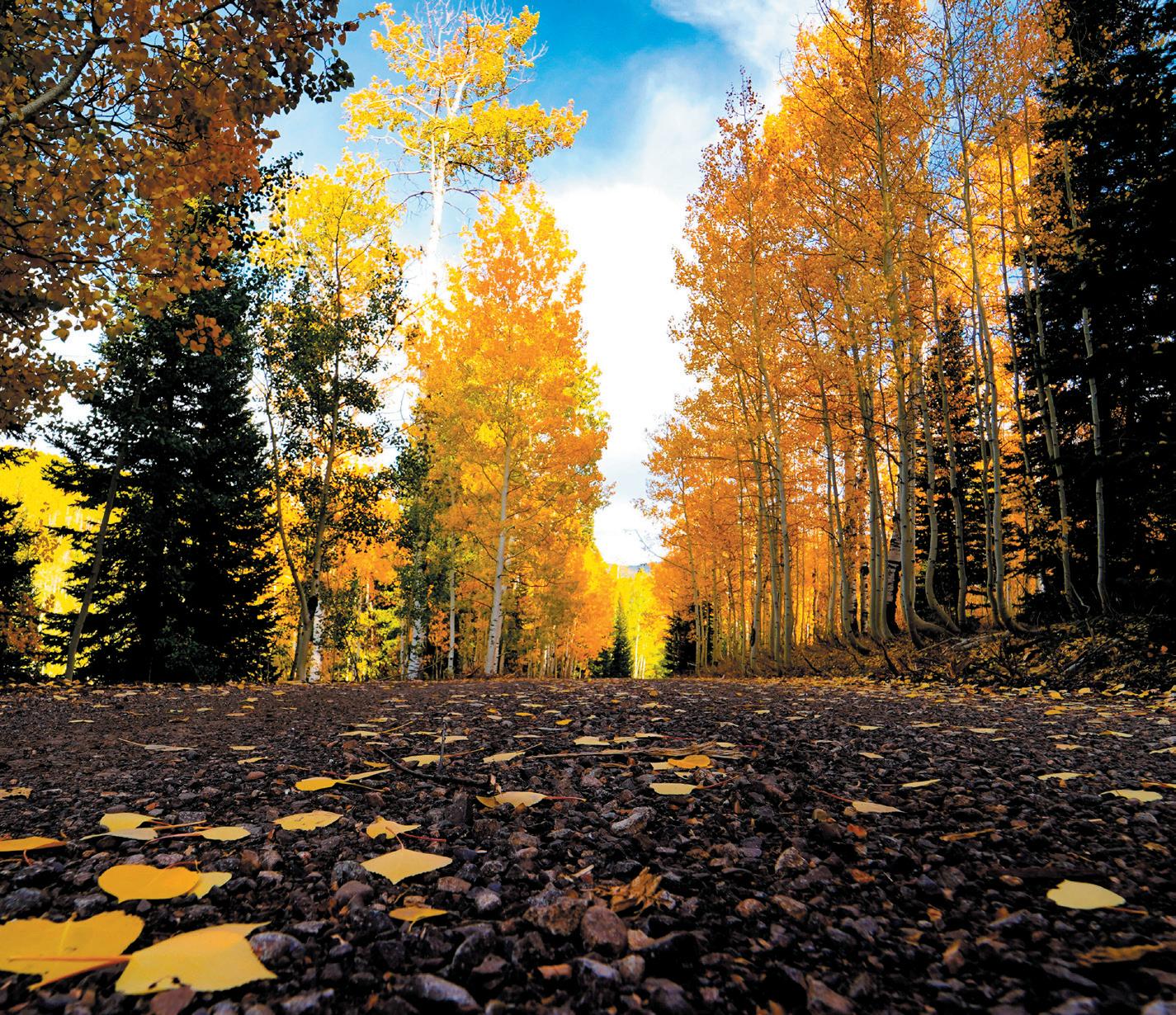
Find more details, videos, and more news on these and other stories at caas.usu.edu/news/index.

The word “agriculture” usually brings to mind crops and animals, but it’s the people working in agriculture who feed the world. Michael Pate, an associate professor in agricultural systems technology is serving as president of the International Society for Agricultural Health and Safety. The position allows him to apply his dual passions for agriculture and helping others to improve safety in a hazardous industry that all people rely on.
Construction Technology and Management Program
After two years of construction, a new house built by students in USU Blanding’s construction technology and management program is nearly ready for sale. Students in the program gain experience working with architectural drawings, floor layout, wall and roofing systems, siding application, soffit and fascia applications, and the installation of windows, doors, stairs, and interior trim. Students in the program learn concepts in a classroom setting which are then applied during hands-on training at the building site. In just two semesters, students can earn a certificate of completion which helps them immediately enter the workforce. Students can also apply those credits toward an associate degree and continue their education.
Top Research Honor
Michael Clayton, a graduate student in the Department of Animal Dairy and Veterinary Sciences, who completed his veterinary pathology residency at the Utah Veterinary Diagnostic Laboratory (UVDL), was awarded first place honors from the American Association of Veterinary Diagnosticians for his presentation, Outbreak of SARS-CoV-2 Infection in Farmed Mink in Utah at the association’s annual meeting. The UVDL was instrumental in confirming cases of the virus in mink in early 2020.

USU Eastern Welders Win National Title
USU Eastern’s welding fabrication team won the national title for college teams in the SkillsUSA National Leadership and Skills Conference for the third consecutive year. The 2021 team consists of welding students Branson Gross of Vernal, Matt Warren of Mapleton, and Nate Wright of Payson. Together, they excelled at the contest’s task of making a dip tank at the Price campus’s welding facility. This year’s competition was done virtually with judges watching cameras trained on the students. The dip tank will be donated to Sleep in Heavenly Peace, a non-profit that builds beds for children in need, where it will be used to treat large pieces of lumber.





By Ysabel Nehring and Lynnette Harris
Happy Birthday, Aggie Ice Cream! January 21, 2022, marks the centennial anniversary of the quintessential Aggie treat, and to honor this milestone, USU will celebrate all year with new and returning flavors and special events.
The Aggie Ice Cream tradition is a cherished part of university history, stretching back to the days of the Utah Agricultural College (UAC). In 1920, a new professor arrived who would forever transform the college creamery as well as the ice cream business throughout the state of Utah. Gustav Wilster, the father of Aggie Ice Cream, previously taught at the Queensland Agricultural College before moving to the United States. Wilster taught at Iowa State University and came to revitalize the UAC’s curriculum in the Department of Dairying after some activities on campus had been pushed aside by the 1919 influenza pandemic.
Though milk from the college dairy had been available on campus — and an all-you-candrink supply of free buttermilk at the entrance to the Animal Industries Building fed many a hungry student here for decades — Wilster arrived ready to study and teach dairy food processing, including ice cream. Using newly purchased machinery and a passion for teaching, Wilster reopened the Aggie Creamery in January 1922 with a new focus on selling student-made ice cream to the student body and the public.
Student Life chronicled the event. “The Dairy Department under the direction of Professor Gustav Wilster is now making lacto ice cream, which has never before been produced in Utah, the formula for which he brought from Iowa. It is a frozen ice cream made from pasteurized milk that has been ripened with pure culture and then had sugar and flavoring added. This new product is meeting with great favor locally.”
In the summer of 1922, Wilster and his students’ skills were put to the test at the annual UAC Farmer’s Encampment. About 2,500 people camped on the Quad and enjoyed ice cream, milk, and cheese produced by the Aggie Creamery.
Although his time at USU was brief, Wilster left a great and lasting impression on the college and the students he taught. Several of his students went on to found successful and iconic Utah ice cream businesses, including Casper Merrill who opened Casper’s Ice Cream and invented the Fat Boy Ice Cream sandwich, and members of the Farr family, owners of Farr Better Ice Cream in Ogden.
Other of Wilster’s students, including A.J. Morris and Paul B. Larsen, later joined the faculty and continued the tradition of reaching out beyond the university by conducting annual ice cream short courses for people in the dairy industry. The printed program from one such weeklong course in 1949 shows Laird Snelgrove, another well-known name in Utah ice cream history, conducting the sessions that featured Morris and Larsen teaching.

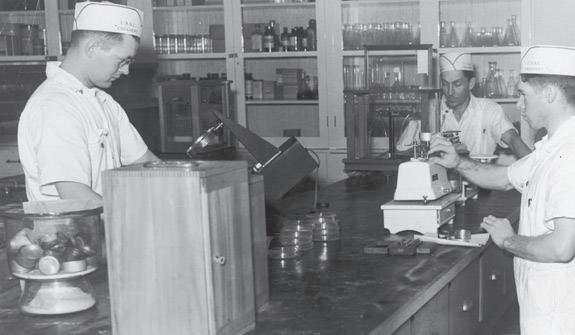
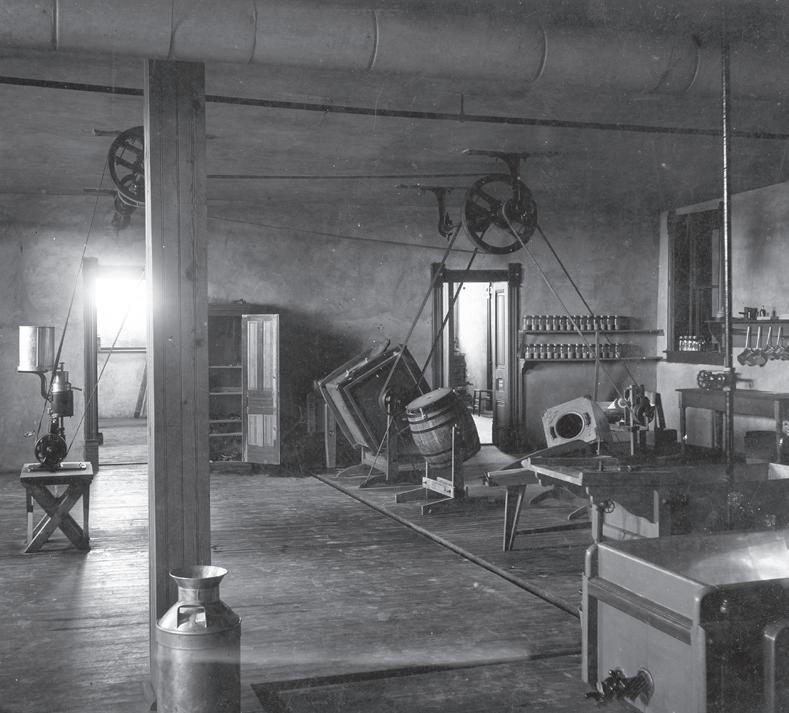
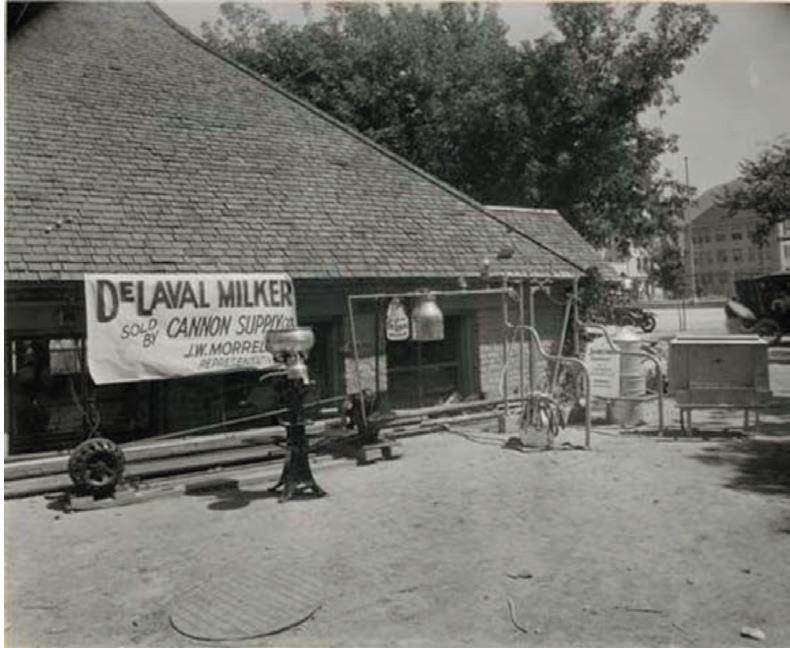

Professor Morris, who was extremely cognizant of the nuances of ice cream, could identify students by the quality of their ice cream. While traveling through the Midwest one summer, he stopped at an ice cream parlor. After tasting the ice cream, he commented, “This is one of my students’ ice cream.” Sure enough, a former student managed the ice cream operation, and Morris was delighted to see the fruits of his labor so many miles from campus.
The school’s creamery has moved over the decades from its original spot in the basement of Old Main to a small building on the Quad and later to the Animal Industry Building. The Aggie Creamery is now in the C. Anthon Ernstrom Nutrition and Food Sciences Building, named after the professor who replaced Morris as head of dairy manufacturing in 1968. Professor Ernstrom also founded Heart to Heart Foods, which later developed the regionally famous Creamies ice cream pop. Production of ice cream and award-winning cheese is now done in a lab named for another long-time faculty member and influence on the dairy products industry, Emeritus Professor Gary Richardson.
The Aggie Creamery production and store both underwent renovations in 2018, with the addition of a Soda Shoppe. Bridgett Liberty currently manages the production of Aggie Ice Cream.
“It hasn’t mattered over the last 100 years who is in charge,” Liberty said. “It hasn’t mattered who they were or where they came from, what they did, because there’s a standard that Utah State has set that we’re the best ice cream maker, and that has not changed regardless of who has been in charge.”
As a testament to Aggie Ice Cream’s quality, the Creamery was awarded the Best of State: Ice Cream in 2021, an honor previously awarded in 2016. Aggie Ice Cream was also voted Logan’s best ice cream in 2017 by a Logan City poll and Utah’s best ice cream in 2016 by KSL. In 2017, Deseret News readers voted Aggie Ice Cream as the best over the BYU Creamery.
Liberty attributes Aggie Ice Cream’s longevity to the quality of the milk produced by the USU Caine Dairy, a commitment to traditional methods, and community support.
“We’re all connected,” she said. “You can’t be in the agricultural business and not be connected. From the local farmers that grow the feed to the cows cared for on the farm to the business relationships we have with Gossners and other local plants, it’s all connected.”
For a century now, students, faculty, alumni, and Cache Valley residents have made Aggie Ice Cream part of their personal and family’s traditions. Countless students have celebrated finishing finals, graduation, birthdays, and other milestones with Aggie Ice Cream. Stop by the Aggie Creamery just about any time, but especially on summer evenings, and you’ll find families making memories while they enjoy their favorite flavors
Bridgett emphasized that the centennial celebrations will focus on giving back to the community.
“Aggie Ice Cream wouldn’t be what it is without support from the community and customers who come faithfully all the time,” said Liberty.
This support is not only local, but regional, and sometimes global. With online purchasing becoming available in 2020, Aggie Ice Cream has been shipped as far as Switzerland, over 5,000 miles away. �

To be certain you don’t miss the chance to try some new flavors or enjoy some favorite “oldies” during the Aggie Ice Cream Centennial celebration, please follow @AggieIceCream on Facebook and Instagram.










